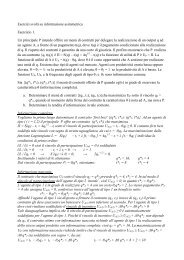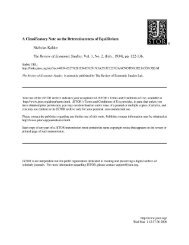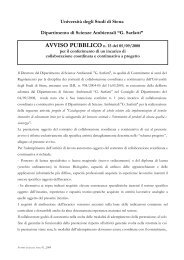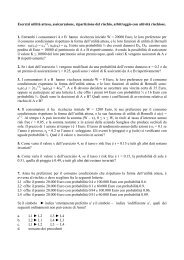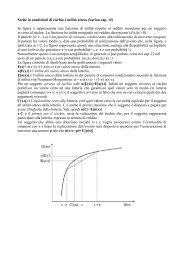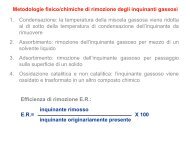Stabilisation Policy in a Closed Economy Author(s): A. W. Phillips ...
Stabilisation Policy in a Closed Economy Author(s): A. W. Phillips ...
Stabilisation Policy in a Closed Economy Author(s): A. W. Phillips ...
You also want an ePaper? Increase the reach of your titles
YUMPU automatically turns print PDFs into web optimized ePapers that Google loves.
1954] STABILISATION POLICY IN A CLOSED ECONOMY 293<br />
dist<strong>in</strong>guish between an <strong>in</strong>itial or spontaneous change <strong>in</strong> demand,<br />
represent<strong>in</strong>g a disturbance or change <strong>in</strong> the relationships of the<br />
model, and the additional or <strong>in</strong>duced changes <strong>in</strong> demand which<br />
result from the dependence of demand on production and <strong>in</strong> turn<br />
<strong>in</strong>duce further changes <strong>in</strong> production by the familiar multiplier<br />
process. When these <strong>in</strong>duced effects are taken <strong>in</strong>to account the<br />
-25-<br />
-.50-<br />
'-75<br />
-1 00<br />
Time <strong>in</strong> years<br />
0 *25 50 75 1[00 1 25 1'50 1L75 200<br />
0- --(<br />
(c)<br />
(a)<br />
(b)<br />
Production<br />
Demand<br />
FIG. 2<br />
Curve (a), s<strong>in</strong>gle production lag.<br />
Curve (b), double production lag.<br />
Curve (c), triple production lag.<br />
response of production, measured from a-n <strong>in</strong>itial equilibrium<br />
value, to a spontaneous fall <strong>in</strong> demand of one unit, occurr<strong>in</strong>g at<br />
time zero and cont<strong>in</strong>u<strong>in</strong>g thereafter, is shown by Curve (a) of Fig.<br />
3. This is, of course, simply a cont<strong>in</strong>uous version of the ord<strong>in</strong>ary<br />
multiplier process, the multiplier be<strong>in</strong>g the reciprocal of the<br />
marg<strong>in</strong>al leakage, or 4.<br />
2. The <strong>Stabilisation</strong> Problem<br />
The adoption of a policy for stabilis<strong>in</strong>g production implies that<br />
there is some level of production which it is desired to ma<strong>in</strong>ta<strong>in</strong>.<br />
The desired level may be that which, given the exist<strong>in</strong>g productive<br />
resources, would result <strong>in</strong> a certa<strong>in</strong> level of employment, or it may<br />
be that which would result <strong>in</strong> a constant price <strong>in</strong>dex of consumers'<br />
goods, or the choice may be based on a number of other economic,<br />
political or social considerations. For the limited purpose of<br />
study<strong>in</strong>g the pr<strong>in</strong>ciples of stabilisation <strong>in</strong> a closed economy the<br />
choice of desired production may be considered as given. The<br />
difference between the actual production and desired production<br />
at any time will be called the error <strong>in</strong> production.<br />
<strong>Stabilisation</strong> policy consists <strong>in</strong> detect<strong>in</strong>g any error and tak<strong>in</strong>g



